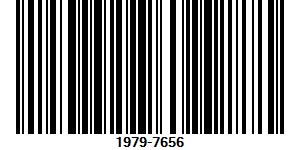Analisis Sentimen Berdasarkan Topik Terkait Wabah Covid-19 di Twitter Menggunakan Latent Dirichlet Allocation (LDA) dan Naive Bayes Classifier (NBC)
DOI:
https://doi.org/10.30989/teknomatika.v15i2.1098Keywords:
COVID-19, Latent Dirichlet Allocation, Naïve Bayes Classifier, Text Mining, Topic ModellingAbstract
In 2020 WHO determined that the Corona Virus (COVID-19) was a pandemic. The global spread of the COVID-19 outbreak has made Twitter one of the most widely used tools to publish and find information. This study aims to form a modeling of topics related to the COVID-19 outbreak on the Twitter social media platform and analyze positive and negative sentiments in each topic that has been obtained by combining the two Latent Dirichlet Allocation (LDA) and Naïve Bayes Classification (NBC) methods. Beginning with modeling the topic using the Latent Dirichlet Allocation so that the topics that have been obtained will be searched for the sentiment value of each topic using the Naïve Bayes Classifier method. This study succeeded in combining the two methods with a fairly good accuracy of 89%. In topic modeling, 5 ideal topics were obtained and it can be seen that the most discussed topic is booster vaccination. The results of the classification using NBC show that the topic of booster vaccination has more negative sentiments than positive sentiments.
References
[2] P. Arsi and R. Waluyo, “Analisis Sentimen Wacana Pemindahan Ibu Kota Indonesia Menggunakan Algoritma Support Vector Machine (SVM),” J. Teknol. Inf. dan Ilmu Komput, vol. 8, no. 1, p. 147, 2021.
[3] T. K. Kurniasari, W. Maharani, and J. H. Husen, “Analisis Media Sosial Twitter Untuk Mengetahui Pengguna Berpengaruh Pada Portal Berita Di Indonesia Dengan Metode Tsim (topic-based Social Influence Measurment),” eProceedings of Engineering, vol. 7, no. 3, 2020.
[4] N. C. Siregar, R. R. A. Siregar, and M. Y. D. Sudirman, “Implementasi Metode Naive Bayes Classifier (NBC) Pada Komentar Warga Sekolah Mengenai Pelaksanaan Pembelajaran Jarak Jauh (PJJ),” Jurnal Teknologia, vol. 3, no. 1, 2020.
[5] H. A. Prakosa and S. Nasiroh, “Analisis Sentimen dan Pemodelan Topik Untuk Mengidentifikasi Topik Pandemi Covid-19 Pada Media Sosial Twitter menggunakan Naïve Bayes Classifier dan Latent Dirichleat Allocation,” JNANALOKA, pp. 73–78, 2021.
[6] W. Yulita, E. D. Nugroho, and M. H. Algifari, “Sentiment Analysis on Public Opinion About the Covid-19 Vaccine Using the Naïve Bayes Classifier Algorithm.” Jdmsi, 2021.
[7] T. Yulianita, T. W. Utami, and M. Al Haris, “Analisis sentimen dalam penanganan covid-19 di indonesia menggunakan naive bayes classifier,” in Seminar Nasional Variansi, 2020, pp. 235–243.
[8] K. F. Hakim, P. Silvianti, and A. M. Soleh, “Latent Dirichlet Allocation dalam Identifikasi Respon Masyarakat Indonesia Terhadap Covid-19 Tahun 2020-2021,” Xplore: Journal of Statistics, vol. 10, no. 3, pp. 249–258, 2021.
[9] M. A. N. Febriansyach, F. Rashif, G. I. P. Nirvana, and N. A. Rakhmawati, “Implementasi LDA untuk Pengelompokan Topik Tweet Akun Bot Twitter bertagar# covid-19,” CogITo Smart Journal, vol. 7, no. 1, pp. 170–181, 2021.
[10] R. K. Ngantung and M. A. I. Pakereng, “Model Pengembangan Sistem Informasi Akademik Berbasis User Centered Design Menerapkan Framework Flask Python,” Jurnal Media Informatika Budidarma, vol. 5, no. 3, pp. 1052–1062, 2021.










